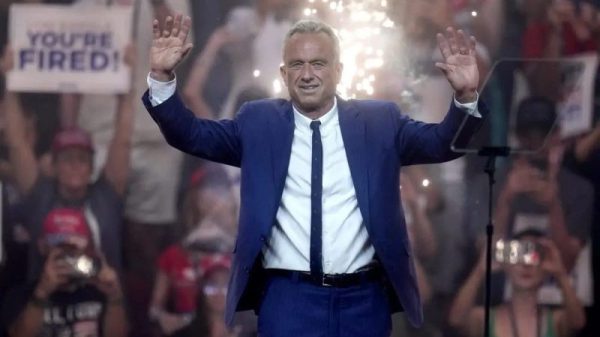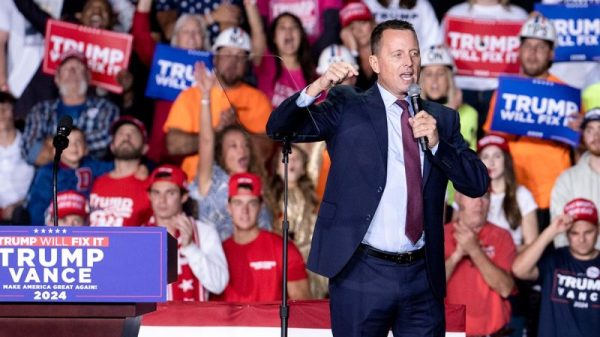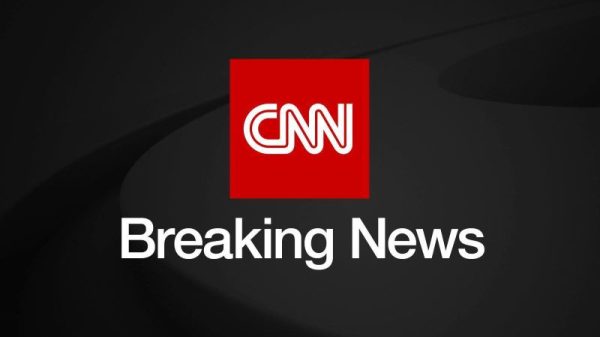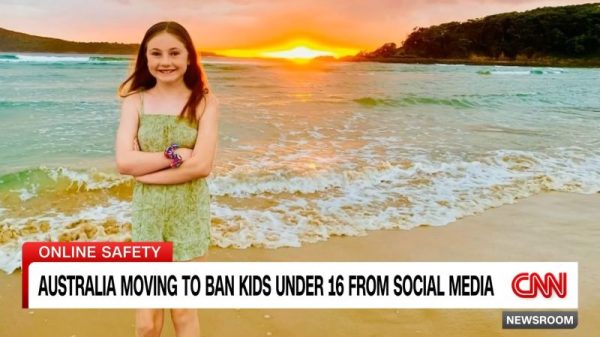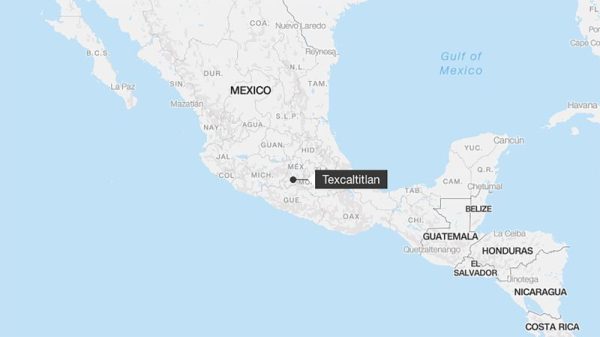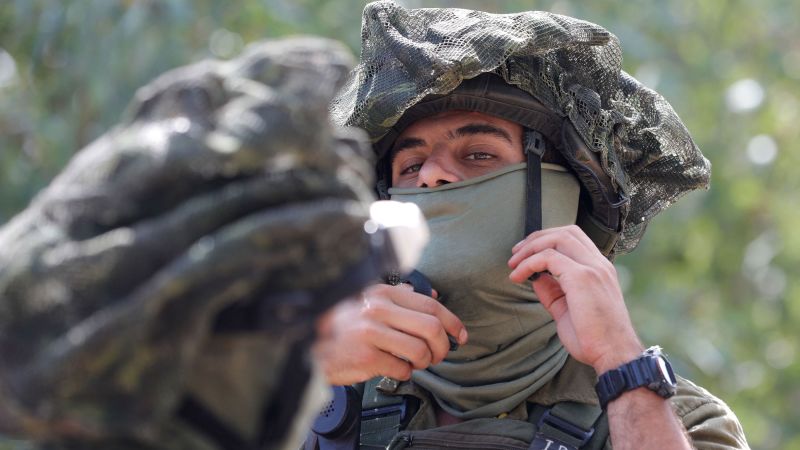On the face of it, the crossfire on Lebanon’s border with Israel appears marginal, dwarfed by the scale and intensity of the Hamas-Israel war further south.
The fighting has stayed within a roughly 4-kilometer (2.5-mile) radius of either side of the demarcation line, with at least 13 people killed since last Saturday.
Yet this barely populated swathe of mountainous terrain could be the launching pad of a regional war, drawing in a myriad of actors, including Iran and the United States.
Hezbollah – an Iran-backed armed group that is also a regional force in its own right – dominates south Lebanon. It also operates alongside Iran’s elite Revolutionary Guard Corps in Syria, where the Israeli-occupied Golan Heights separates Israel from Tehran-aligned fighters.
Iran’s Foreign Minister Amir Abdollahian on Monday raised the specter of expanded fighting after talking to counterparts in Tunisia, Malaysia and Pakistan.
“Underlined the need to immediately stop Zionist crimes & murders in Gaza & to dispatch humanitarian aid,” he wrote on X, formerly known as Twitter.
“I stressed that time is running out for political solutions; probable spread of war in other fronts is approaching unavoidable stage,” he added.
It is a scenario that has gained more currency across a restive Arab and Muslim world as images of dead Palestinian civilians, including more than 500 children, flash on television screens and social media posts, reflecting a civilian death toll rapidly rising at a rate not seen in decades.
Meanwhile, the US has deployed two of its largest aircraft carriers — including the nuclear-powered USS Gerald Ford — to the eastern Mediterranean. It is an ominous sign of what may come if the situation on the Lebanon-Israel border combusts into a full-scale war.
Skirmishes escalate into serious clashes
For most of last week, the skirmishes were a low-rumbling exchange of fire between Lebanon-based militants and Israeli forces.
Palestinian militants fired the first shots from Lebanon, hours after Hamas’ surprise attack of October 7, launching rockets that were intercepted over Israel. Israel responded by shooting into Lebanese territory, including at Hezbollah positions. Hezbollah then launched missiles into Israel’s northern-most territory. That cycle repeated for several days.
By Friday morning, three Israeli soldiers and three Hezbollah fighters had been killed in the exchanges across the border.
But then the tit-for-tat escalated. At around 5 p.m. on Friday, Reuters journalist Issam Abdallah, who was also a south Lebanon native, was killed in an Israeli strike that wounded at least six other international journalists.
Israel said it was investigating the incident. In an Israeli military statement that was released around the time of the attack, it said it was shelling Lebanese territory with artillery fire in response to an explosion at a border fence in Israel’s Hanita, near to where Abdallah was killed.
The situation at the border spiraled further the next day.
On Saturday, Hezbollah launched a series of strikes at Israeli targets in the disputed Shebaa farms, which was followed by a barrage of artillery fire from Israel. On Sunday, the Lebanese militants fired at several Israeli locations at the border, killing one civilian and one soldier. Earlier that day, Israel turned the 4-kilometer area near its border into a closed military zone.
In Hezbollah’s statements on Sunday, the group said its cross-border attacks were in response to Abdallah’s killing and the killing of two elderly civilians in Sunday’s Israeli attacks in the border region.
Unlike low-tech rockets that are fired by Palestinian fighters in Lebanon — and are mostly intercepted by Israel — Hezbollah uses Russian anti-tank guided missiles known as Kornets.
Every Hezbollah attack over the last week was followed by a video released by the group that demonstrated precision. They were direct hits that seemed to blindside Israeli troops seen in the videos.
These videos are key to the psychological warfare that underpins this flare-up. It shows clearly how much more sophisticated the group’s arsenal had become since its last conflict with Israel in 2006, when it relied largely on inaccurate Soviet-era Katyusha rockets.
Back then, the 2006 Lebanon-Israel war ended with no clear victor or vanquished. At the time, many parts of Lebanon were devastated, but Hezbollah foiled Israel’s ultimate plan to dismantle the group, dealing a blow to Israel’s aura of invincibility.
In the intervening years, Hezbollah has dramatically built up its arsenal, and its fighters are far more experienced in urban warfare. They’re battle-hardened from fighting in Syria against ISIS, the al-Qaeda-affiliated Nusra Front, and armed opposition groups that tried to topple Syrian President Bashar al-Assad.
Hezbollah chief Hassan Nasrallah has repeatedly evoked a hypothetical scenario where his fighters would conduct an incursion into northern Israel in case war erupted between Lebanon and Israel again. Israel and US officials have repeatedly expressed alarm about Hezbollah’s precision-guided missiles, which were used against Israel for the first time this month.
Nasrallah has also said that his group boasts more than 100,000 fighters and reservists. Historically, Israeli and US officials have been reluctant to dismiss claims by the paramilitary leader, who oversaw a surge in the size and power of the group in the 32 years of his leadership.
Yet Nasrallah, known for his fiery televised speeches, has been noticeably silent since October 7. Observers don’t know what to make of this. In addresses he delivered in recent months, Nasrallah lauded the growing alliance between his group and Hamas, though they were on opposite sides of Syria’s bloody civil war.
He has also indicated that the loose rules of engagement between Hezbollah and Israel may soon change, with the Lebanon-based group possibly intervening on behalf of the Palestinians.
This has led many observers to speculate that Hezbollah may expand its fight against Israel in case of the much-anticipated Israeli ground invasion into Gaza.
Yet what happens from now is anyone’s guess. World leaders will continue to watch this border with bated breath.











